Understanding Camera Movement
- Mik Bromley
- Aug 21, 2020
- 3 min read
Updated: Oct 31, 2021

While photo modes may lack the physical presence of a real camera, changing the position of your virtual hardware is just as integral to the experience, and understanding each type of movement can make your life easier when it comes to finessing the composition of a shot. With such a variety of virtual photography camera tools out there, the terminology can often differ from one photo mode to another, and may even be used erroneously at times. To put things on the same page, here is a round up of the basic camera movements and their standard terms as used in photography and cinematography, as well as in my other blog posts.
Pan:
The action of changing the camera's direction of "look" to the left or right by swivelling on a fixed vertical axis, much like turning your head side-to-side. Derived from term panorama, referring to a wide view, a pan does not change the camera position and instead adjusts its view towards an object not visible directly ahead.

Tilt:
Similar to pan, tilt again changes the direction of look from a fixed camera position but this time in an upward or downward direction by swivelling on a centred horizontal axis. Akin to tilting your head back to look up or forward to look down, camera tilt can be used to add vertical perspective.

Roll:
Roll is the rotation of the camera around its optical axis without any change to its position or direction of look. A small amount of roll may be used to balance a shot, add interest via a technique known as Dutch Angle (sometimes confusingly called Dutch Tilt) or to simply transition from landscape to portrait orientation.

Truck:
Trucking refers to the lateral movement of the entire camera from left to right while maintaining the direction of look straight ahead. This can be used to adjust the position of a subject within the frame without changing the viewing angle as would occur with a pan movement.

Dolly:
Similar to truck, a dolly adjustment is the movement of the entire camera forwards or backwards on a single plane through the environment. Again without changing the camera's direction of look, this positional shift closer to or further away from the subject will make them appear larger or smaller in the frame while also moving past nearby objects.

Crane:
The third planar camera adjustment, crane (or sometimes pedestal) refers to the vertical movement of the camera straight up or down over a fixed location, as though being raised or lowered by a crane. As with truck and dolly, the direction of look remains unchanged and the camera's elevation can be used to give a view close to ground-level or over objects without tilting up / down.

Zoom:
Not really a movement as such, zooming involves changing a camera's focal length to narrow or widen the field of view. This has the effect of making subjects appear closer to or further away from the camera without changing its position. Zooming can be used to compress scenes and de-clutter the frame, or to add perspective distortion.

Orbit:
A movement that you would be unlikely to encounter when looking through a real camera but one that is common in games with a third-person view, orbit refers to the circular motion of a camera around a central anchor point. Not to be confused with a camera bounding sphere, which merely imposes a limit on the range of free-camera movement, an orbit moves the camera while keeping its direction of look fixed on a single focal point, often the character.

Subscribe to the fortnightly newsletter for all the latest features from TheFourthFocus.com
Knowing these essential camera movements and when to combine them will allow you to achieve any type of composition you can imagine, assuming of course that the photo mode you are using at the time facilitates it.
Thanks for reading and let me know what else you'd like me to cover in the comments or on Twitter.
Mik
[ Tags: #Guide | #PhotoMode | #List ]

















Kaiser OTC benefits provide members with discounts on over-the-counter medications, vitamins, and health essentials, promoting better health management and cost-effective wellness solutions.
Obituaries near me help you find recent death notices, providing information about funeral services, memorials, and tributes for loved ones in your area.
is traveluro legit? Many users have had mixed experiences with the platform, so it's important to read reviews and verify deals before booking.